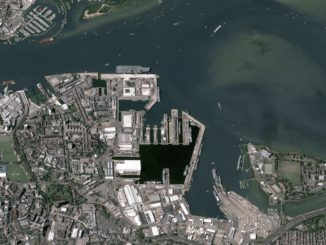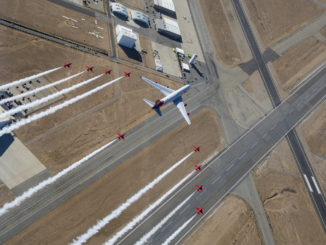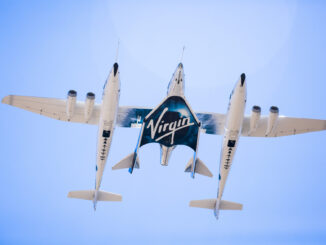
This month we will see the biggest and most exciting development in human space travel this century. An event that will revitalise the space race, planting the seeds of new ideas in the minds of those who may view our lunar visits as stuff of fairy tales from long, long ago.
After completing every test and overcoming many challenges with outstanding results, we will witness the the first launch of American astronauts, on board American hardware, from American soil, since the retirement of the shuttle programme almost a decade ago.
SpaceX Crew Demo 2, though officially a test mission, will finally see the long-awaited return to orbit (and eventually beyond) of astronauts starting their ascent from home ground. This has felt like a very long wait, with the period immediately following the retirement of the legendary shuttle craft the sad end of a spectacular era in our history.

Since 2011, any Americans assigned orbital missions have only been able to get there by purchasing seats on board the reliable, yet expensive, Soyuz rockets half a world away. This is currently the only launch vehicle on earth capable of taking humans to the International Space Station (ISS). Operated by Roscosmos Agency in Russia, this adds not only financial weight to the assignment, but also lengthens these missions by adding intercontinental travel into the mix.

SpaceX’s “Dragon” craft will be carried into orbit by the Falcon 9 rocket. This is the first-ever orbital class rocket capable of reflight. This fact sets the tone of the entire project. The shuttlecraft was itself designed to be capable of multiple journeys, and as such enjoyed huge success during 30 years in service using just 5 spacecraft. However, the biggest drawback was that each launch required a brand new rocket to carry them out of our atmosphere. This, of course, meant the cost per mission was less than previous technology had permitted, but still had a huge financial burden to get each one of the 135 manned missions off the ground.
SpaceX founder, Elon Musk, has spent the last 18 years designing entirely new hardware capable of enduring the rigours of launch and ensure the safe (vertical) landing of boosters which can be rapidly returned to service. Having access to such technology is vital. Without reusable vehicles, physical human exploration of other worlds will never be achieved. Resources of materials and funds would ultimately run dry.
To simplify this point further, let’s apply this same logic to something more familiar. Imagine a scenario of planning a holiday abroad. This is expensive enough to many, even with the huge range of companies offering great deals to get you away. Now imagine if, every time you travel, the plane kicks you out over your chosen destination so it can be scrapped (probably in the sea). At best, that same craft can get you home, but with half of its bodywork missing.
If each booking required a brand new aircraft the cost to the end consumer would be unthinkable. Without the reusability of modern vehicles, there would simply be no commercial flight industry – an economy generating essential for us all in the 21st century.

Following years of development of both the Falcon rocket and the Crew Dragon craft, Crew Demo 1 finally launched on 2nd of March 2019. This was the first time a US craft autonomously docked with the ISS. The cargo carried within the unmanned Dragon included essential supplies for crew living aboard the station, as well as new experiments to be carried out in orbit.
Also on board was a high tech humanoid test dummy named “Ripley”. She was dressed in SpaceX’s brand new spacesuit (much less cumbersome than previous designs) and loaded with sensors built into her spine, neck and head in order to collect data to determine the forces that will be exerted on the bodies of the crew on future manned flights.
She was accompanied by a plush toy globe character, apparently unrestrained, enabling staff in mission control to see the moment zero gravity was experienced. Ripley returned to Earth on 8th March 2019 in a perfect end to the test.

The next significant milestone was the Launch Abort Test on 19th January 2020. This was to prove the Dragon’s ability to escape the rocket’s trajectory in the event of a critical malfunction during launch, before safely returning the module to Earth. During this test, the module was able to distance itself from the body of the booster by half a mile in under 7.5 seconds.
The alcon 9 used on this occasion was ultimately destroyed when air resistance caused the predicted structural failure of the unit. This reduced stability during ascent. It seemed a fitting end to its service though, having previously carried out 5 successful demonstrations.
The Falcon 9 rocket launch vehicle stands 70 meters tall, and only 3.7meters in diameter (by comparison, Saturn V – used during Apollo era – reigned supreme at a whopping 110m tall, whilst the now iconic orange “STS” launch vehicles used to lift the shuttles stood at just over 56 metres). It generates 771,109kg (7,607kN) of thrust at sea level from nine Merlin engines using liquid oxygen and rocket-grade kerosene (RP-1) as fuel.
Following first stage separation, the trunk section returns to earth using stabilising fins to guide its descent. It then lands vertically on one of several pads, either on a drone ship out at sea or near the base, depending on the mission.
SpaceX have also entirely redesigned the parachute system used to slow the descent of the pod during landing. The current, 3rd generation of this system comprises of 2 drogue parachutes guiding 4 main parachutes. This provides more than enough drag to easily bring them to a comfortable stop. It’s reliability has been proven having been tested 27 times.

American astronauts Bob Behnken and Doug Hurley will be the first to travel into orbit on board a space craft designed and built by a private commercial company. They will join the 3 crew members currently living and working on ISS. The duration of their stay is currently undetermined – anywhere between 30 to 119 days.
Both men are well prepared for the task ahead and have plenty of experience of working in Zero-G. Since being selected as astronauts back in 2000 they have managed to clock-up almost 58 days in space across 4 shuttle missions.

The crew selected for this milestone task couldn’t be more fitting. Bob Behnken trained as a test pilot in an Air Force Academy in California, eventually designated as lead Flight Test Engineer for the 4th F-22 fighter jet. During the course of his participation of STS 123 & STS 130, he completed 37 hours outside during 6 space walks.

Doug Hurley was an experienced test pilot for the US Marines before joining NASA. Most significantly in this particular story, Hurley was the pilot of STS 135. This gives him the honour of being at the controls at the end of an era, and yet continue the nation’s story by manning the next generation of space bound machines.
Crew Demo 2 is currently set for launch at 20:33 (UTC) from the historic Launch Pad 39A (LC-39A) at Cape Canaveral in Florida, on Wednesday 27th May 2020. It can be watched live on Youtube using the link below. Also broadcast live on the NASA website.




